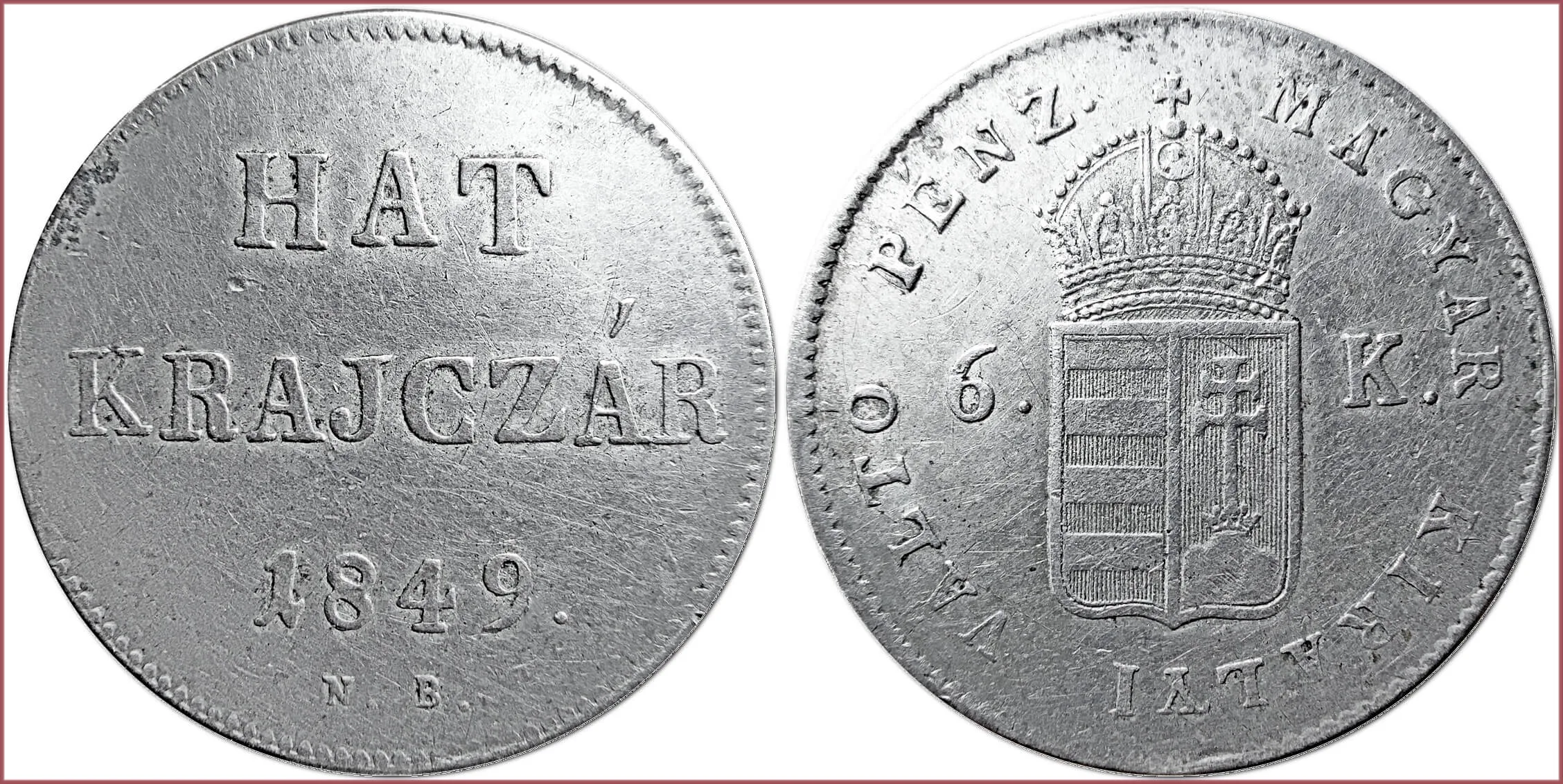KRAJCZÁR: COIN OF HUNGARY
6 krajczár, 1849: Kingdom of Hungary (Hungarian Revolution of 1848-1849)
Coin of the period of the Hungarian Civic Revolution and War of Independence of 1848-1849.
HAT KRAJCZÁR: six krajczár.
N.B.: sign of Imperial Mint of Baia Mare (Hungarian name of the city — "Nagybánya") in modern Romania (now there is a history museum).
MAGYAR KIRÁLYI VÁLTÓPÉNZ: Hungarian Royal small (change) coin.
6 K.: abbreviated denomination.
Coat of arms of Hungary: the crown of St. Stephen above a heraldic shield with the stripes of the Arpads (Hungarian dynasty, that ruled during the 9th-14th centuries) and the modified coat of arms of Slovakia (formerly a part of Hungary).
Coin design: Johann Gerger.
The modern coat of arms of Slovakia is almost identical to the fragment of the Hungarian coat of arms — it contains the image of a cross on three mountains, two of which (Tatra and Fatra) are now located on the territory of Slovakia, and one (Matra) belongs to Hungary.
- Silver: 20 mm - 2.18 g
- Reference price: 27$
COIN KRAJCZÁR — WHERE & WHEN (coins catalog: by names & emitents)
- HUNGARY (18th-19th centuries) — KINGDOM OF HUNGARY + HUNGARIAN CIVIC REVOLUTION AND WAR OF INDEPENDENCE OF 1848-1849: krajczár = 1/100 forint (previously — 1/60 forint, even earlier — 3 denár = 6 obulus)
- HUNGARIAN STATES — Principality of Transylvania (17th-18th centuries): krajczár = 1/72 tallér
KRAJCZÁR (less often, obsolete — krajcár) as coin name.
Ever since the Early Middle Ages in Europe, the image of the cross has become almost the most popular plot of coins. Most often, the cross was depicted on coins that became descendants of the Roman denarius — denar, denier, denaro...
However, already in the 13th century in South Tyrol, a separate type of coins appeared with a special image — double cross (the imposition of ordinary and St. Andrew's crosses). These first Austrian coins of the new type received the name kreuzer or kreutzer (German "Kreuz" — cross).
Soon the same coins began to be issued in the lands of modern Germany, Switzerland, France...
The Hungarians began to mint the same coin in the 17th century, but the denomination on these coins was already indicated in the national format — krajczár. That is, krajczár is Hungarian (written in Hungarian) kreuzer / kreutzer.
It is interesting that online translators translate the term "krajczár" from Hungarian as "gate lock".











